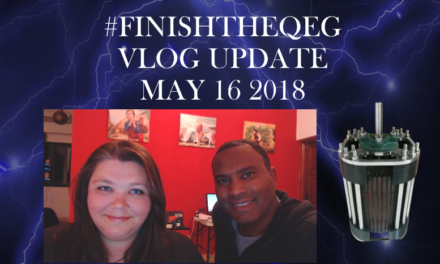The U.S. Patent Office has a nine-member committee that screens patents in order to protect “national security”. Another purpose of this committee is to also find and remove from public access energy-related patents which could threaten the fossil fuel and power monopolies. Anytime someone applies for a patent, it goes through this screening process, if the device has anything to do with the production of “free energy” they classify it, confiscate it, conceal it in a vault and forbid the inventor to reproduce it.
If an inventor proceeds with their invention,
they can face up to
20 YEARS IN FEDERAL PRISON
In the documentary film titled, A Machine to Die For; The Quest For Free Energy, an ex-secret service agent assigned to electronic intelligence (whose identity was concealed) made the following statement:
“If you’re an idiot and try to go and patent your device, you’ve given them all your information on where you are and how to find you, and they will try to find some legal mechanism to close you down.”
INVENTION SECRECY ORDER
- Text of Generic Patent Secrecy Order
- SECRECY ORDER
- (Title 35, United States Code (1952), sections 181-188)
- NOTICE: To the applicant above named, his heirs, and any and all of his assignees, attorneys and agents, hereinafter designated principals:
- You are hereby notified that your application as above identified has been found to contain subject matter, the unauthorized disclosure of which might be detrimental to the national security, and you are ordered in nowise to publish or disclose the invention or any material information with respect thereto, including hitherto unpublished details of the subject matter of said application, in any way to any person not cognizant of the invention prior to the date of the order, including any employee of the principals, but to keep the same secret except by written consent first obtained of the Commissioner of Patents, under the penalties of 35 U.S.C. (1952) 182, 186.
- Any other application already filed or hereafter filed which contains any significant part of the subject matter of the above identified application falls within the scope of this order. If such other application does not stand under a security order, it and the common subject matter should be brought to the attention of the Security Group, Licensing and Review, Patent Office.
- If, prior to the issuance of the secrecy order, any significant part of the subject matter has been revealed to any person, the principals shall promptly inform such person of the secrecy order and the penalties for improper disclosure. However, if such part of the subject matter was disclosed to any person in a foreign country or foreign national in the U.S., the principals shall not inform such person of the secrecy order, but instead shall promptly furnish to the Commissioner of Patents the following information to the extent not already furnished: date of disclosure; name and address of the disclosee; identification of such part; and any authorization by a U.S. government agency to export such part. If the subject matter is included in any foreign patent application, or patent, this should be identified. The principals shall comply with any related instructions of the Commissioner.
- This order should not be construed in any way to mean that the Government has adopted or contemplates adoption of the alleged invention disclosed in this application; nor is it any indication of the value of such invention.
Invention Secrecy Act 1951
- The Invention Secrecy Act of 1951 (Pub.L. 82–256, 66 Stat. 3, enacted February 1, 1952, codified at 35 U.S.C. §§ 181–188) is a body of United States federal law designed to prevent disclosure of new inventions and technologies that, in the opinion of selected federal agencies, present a possible threat to the national security of the United States.
- The U.S. government has long sought to control the release of new technologies that might threaten the national defense and economic stability of the country. During World War I, Congress authorized the United States Patent and Trademark Office (PTO) to classify certain defense-related patents. This initial effort lasted only for the duration of that war but was reimposed in October 1941 in anticipation of the U.S. entry into World War II. Patent secrecy orders were initially intended to remain effective for two years, beginning on July 1, 1940, but were later extended for the duration of the war.
- READ THE FULL TEXT DOCUMENT IN THE LINK PROVIDED IN THE NOTES BELOW. IT HAS BEEN UPLOADED ESPECIALLY FOR THIS PRESENTATION. PASSED ON TO US BY AN INVENTOR WHO HAS SINCE PASSED AWAY
Full Text of 1951 Secrecy Act
https://www.hopegirlblog.com/wp-content/uploads/2016/02/1951-secrecy-act.txt













